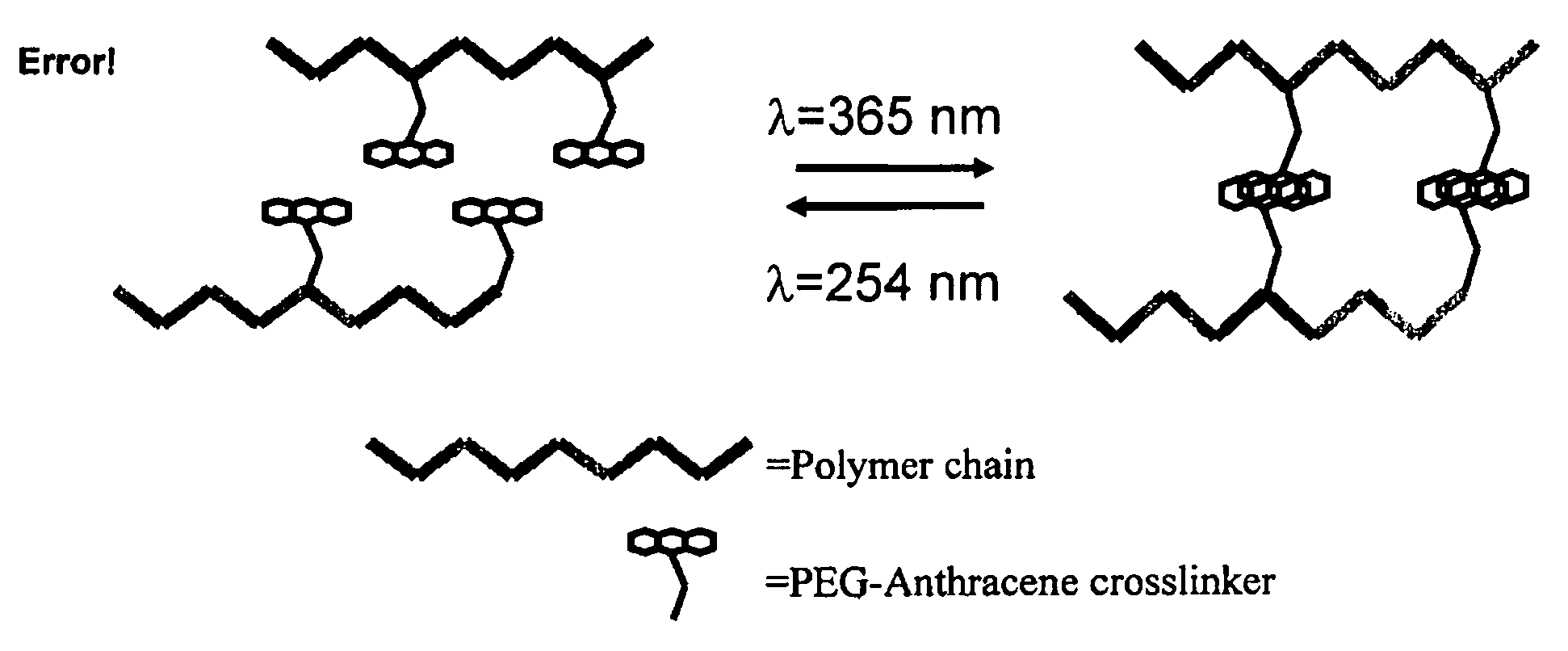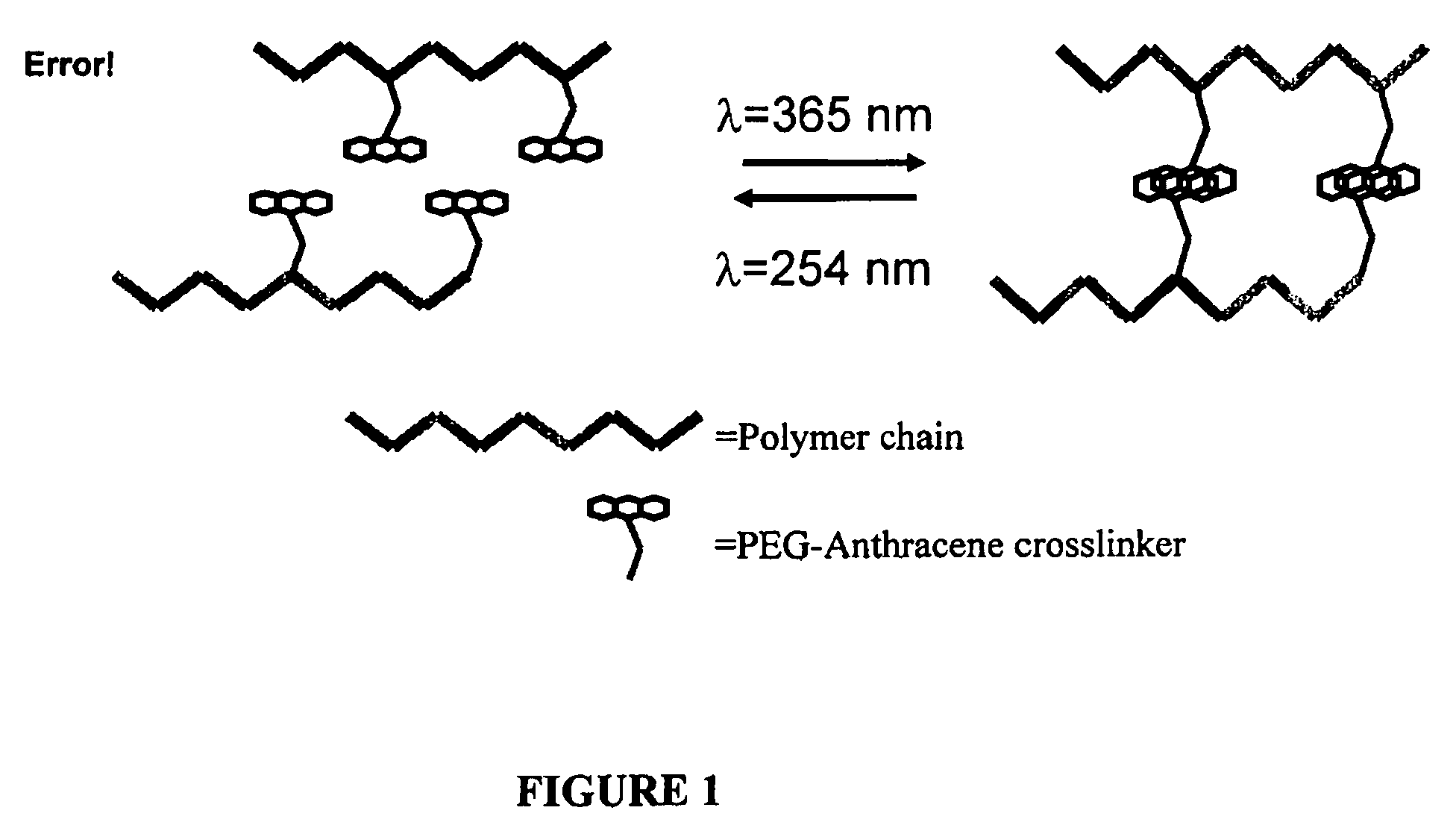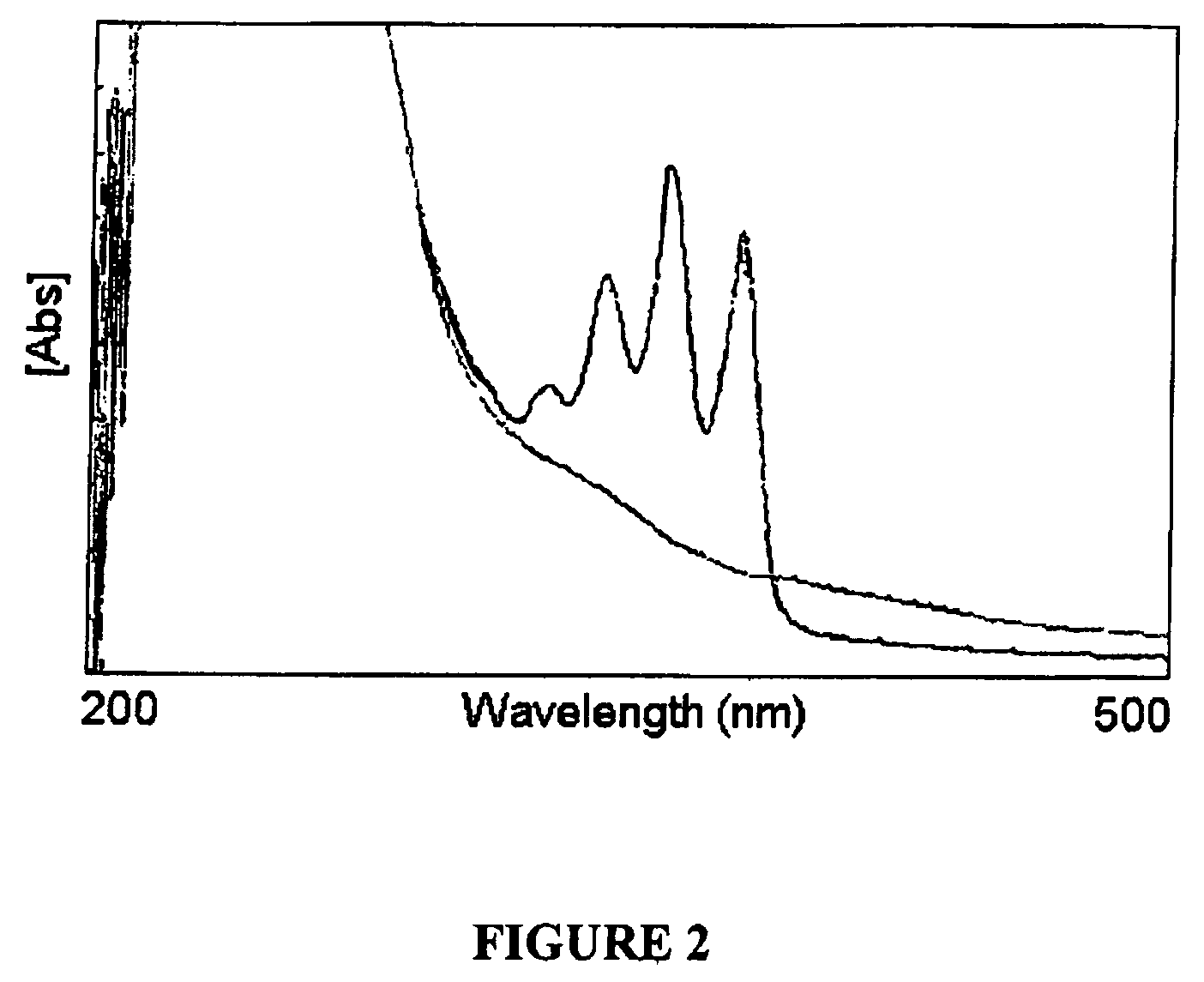Photo-responsive delivery system
a delivery system and photoresponsive technology, applied in the field of delivery systems, can solve the problems of affecting the delivery effect, and posing a significant risk of cataract formation, and achieve the effect of reducing increasing the release of the compound
- Summary
- Abstract
- Description
- Claims
- Application Information
AI Technical Summary
Benefits of technology
Problems solved by technology
Method used
Image
Examples
example 1
Preparation of a Photo-Responsive Drug Delivery System
Materials and Equipment
[0033]Low viscosity sodium alginate produced by Macrocystis pyrifera (61% Mannuronic acid, 39% guluronic acid, MW=12-18 kDa) and O-(2-Aminoethyl)-O′-[2-(Boc-amino)ethyl]decaethylene glycol (Boc-PEG-amine, n=11) were purchased from Sigma-Aldrich (Oakville, ON). Anthracene-9-carboxylic acid was from Alfa Aesar (CA). Coomassie Brilliant Blue G-250 was purchased from Fluka Chemicals (Switzerland). Star-PEG-anthracene was purchased from Polymer Source (Quebec). Other reagents were purchased from Sigma-Aldrich (Oakville, ON) and EM Science (Gibbstown, N.J.). NMR spectra (1H, 13C) were obtained using a Bruker AV 200. The lamps used in all photoresponsive studies are 500 μW / cm2 or 3 mW / cm2 for 365 nm light and 630 μW / cm2 for 254 nm light.
PEG-Anthracene Crosslinker Synthesis
[0034]O-(2-Aminoethyl)-O′-[2-(Boc-amino)ethyl]decaethylene glycol is a diamine terminated polyethylene glycol (MW21 with the addition of triisop...
PUM
| Property | Measurement | Unit |
|---|---|---|
| Mass | aaaaa | aaaaa |
| Wavelength | aaaaa | aaaaa |
| Wavelength | aaaaa | aaaaa |
Abstract
Description
Claims
Application Information
 Login to View More
Login to View More - R&D
- Intellectual Property
- Life Sciences
- Materials
- Tech Scout
- Unparalleled Data Quality
- Higher Quality Content
- 60% Fewer Hallucinations
Browse by: Latest US Patents, China's latest patents, Technical Efficacy Thesaurus, Application Domain, Technology Topic, Popular Technical Reports.
© 2025 PatSnap. All rights reserved.Legal|Privacy policy|Modern Slavery Act Transparency Statement|Sitemap|About US| Contact US: help@patsnap.com



